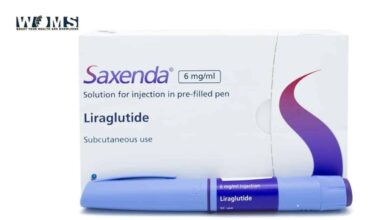The Psychology Behind Drug Addiction and 3 Ways to Break Free

Drug addiction can be a life-changing situation that many people find themselves in. The process of breaking free from addiction is not an easy one. The fact that drugs directly influence brain chemistry, behavior, and relationships makes it difficult for people to stop.
Drugs become such an integral part of life that it can feel almost impossible to quit without serious intervention.
According to the Canadian Centre for Addictions, people who have faced traumatic experiences and deal with emotional difficulties are more likely to fall victim to drugs. There are, of course, several other aspects related to the likelihood of becoming addicted to drugs. Additionally, a number of factors make it difficult to quit.
In today’s article, we will examine three factors that make treatment for drug addiction a complex affair. We will also explore three commonly used methods that help people break free from the grips of addiction.
A Lack of Healthy Coping Mechanisms
Arguably, one of the most common reasons people are unable to turn from drugs is poor coping mechanisms. Coping mechanisms by themselves aren’t unhealthy. We all have our ways of escaping negative feelings like sadness or loneliness. It is not always possible to resolve trauma fully, and forgetting the related memories and emotions may be the best option in certain situations.
Healthy people try to address negative emotions before they become serious enough to warrant the use of drugs as a coping mechanism. If they do end up needing coping styles, it is in the form of something like a hobby, listening to music, or practicing mindfulness.
Such types of coping mechanisms do not create an unhealthy cycle that gets more dangerous with each indulgence. Unfortunately, drugs are often used to cope with extreme feelings that can be overwhelming. When this happens, the individual starts a journey on a dangerous, life-altering path.
Peer Pressure
Despite many advances in the field of psychology, peer pressure remains one of the most commonly identified factors for addiction.
Peer pressure occurs in many forms, which is why it can be insidious. It isn’t just a bunch of rough friends teasing you for not smoking a joint. It can be far more subtle yet equally powerful.
Peer pressure can come in the form of desensitization through frequent exposure to drugs in a person’s friends circle. When the people you trust and rely on keep using drugs all the time with seemingly no ill effects, drugs become normalized. You start to wonder, “How bad is it actually?”
There might be people in your group of friends that are popular and highly successful who use drugs. This can challenge the preconceived notion that drug addicts are desperate individuals that lack any sort of impulse control.
Similarly, peer pressure comes through cultural influence, where those who indulge in drugs are viewed as “experienced” and “mature.”
Neurobiological Factors
While environmental factors and society can definitely make a person more prone to addiction, internal factors also play a role. The neuroplasticity of your brain changes with repeated drug use. When an addict keeps abusing drugs, the neural circuits responsible for motivation and impulse control are affected. This can have serious implications for one’s addiction.
Neurobiological factors can also be responsible for creating conditioned responses, where addicts start to associate places and activities with drug use. As a result, environmental ‘cues’ can trigger intense drug cravings. This is one of the reasons why a lifestyle change is recommended for those trying to get sober.
Many drug addicts who have been sober for months will relapse almost immediately when they return to their old environments.
3 Proven Ways to Break Free From an Addiction
Before we even get into these methods, it’s important to remember that it is unlikely for a single method to be all you require. Depending on the drug, your level of dependence, and other factors, even multiple methods of de-addiction may yield only partial success.
Studies show that it takes up to five or more de-addiction attempts before people are successful. That said, you want to ensure that you are choosing the right methods to go about your de-addiction process.
1. Detoxification
In the context of drug deaddiction, detoxification is the initial phase of treatment. It is aimed at managing and alleviating the physical and psychological symptoms of withdrawal that occur when a person stops using drugs. Detoxification is one of the most important steps in drug addiction treatment.
This is because suddenly stopping drug use can result in severe withdrawal symptoms. These can range from minor discomfort to life-threatening complications.
Detoxification can take place in various settings. It can occur in a medical environment such as a hospital or a detoxification center. It can also take place at the individual’s own home in the case of outpatient detox.
The process involves a combination of assessment, medical monitoring, stabilization, tapering, and psychological support. There is also a lot of psycho-education provided to the individual.
One needs to remember that detoxification only addresses the physical aspects of addiction. The psychological and behavioral components also need to be addressed for successful and long-lasting recovery.
After detoxification, individuals are encouraged to engage in comprehensive addiction treatment programs, such as behavioral therapies, and take part in support groups.
2. Behavioral Therapy
Behavioral therapy is a crucial component in the de-addiction process for drug addicts. It is a structured therapeutic approach that focuses on modifying behaviors associated with drug use and promoting healthier, adaptive behaviors.
Through CBT, patients learn coping strategies to manage cravings, avoid triggers, and develop healthier ways of thinking and responding to stressful situations.
Similarly, DBT or Dialectical Behavior Therapy is often used for individuals with co-occurring substance use disorders and emotional regulation difficulties. It combines elements of CBT with mindfulness techniques to help individuals manage intense emotions, reduce impulsive behaviors, and build healthier coping mechanisms.
3. Support Groups
Just as how unhealthy peer groups make it easy to slip into addictions, the opposite is also true. Support groups for drug and alcohol addicts are one of the most effective ways out of addiction.
Support groups are often mocked in popular media with depictions of people sitting in a circle, taking turns introducing themselves. In reality, support groups do way more than that. They are a priceless opportunity for recovering addicts to learn new coping strategies and receive encouragement and accountability.
Conclusion
While it may seem that getting out of drug addiction is a herculean task, it is very much possible. It will take a lot of work, but if you are serious about turning your life around, these methods are known to work.
People addicted to even the most addictive drugs like heroin and fentanyl have been able to quit. It will probably require massive lifestyle changes for success to be long-lasting, but there is always hope.
Even if you aren’t an addict yourself, perhaps you know someone who is. It is a good idea to learn how to help them out. Sometimes, all it takes is a concerned third party to make an addict realize that they have value in the world. An intervention at the right time can turn the life of an addict around for the better.




